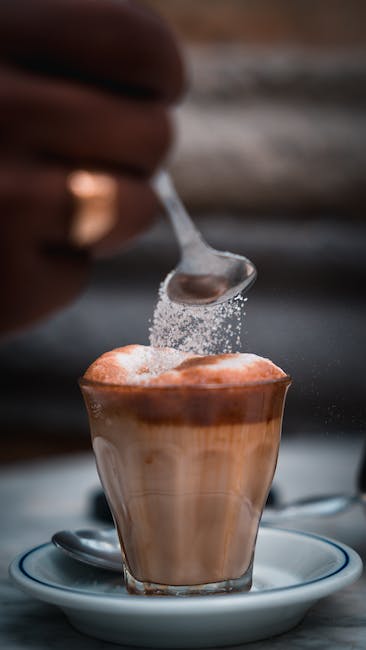Maple Syrup vs Honey: A Sweet Comparison
When it comes to natural sweeteners, maple syrup and honey are two of the most popular choices on the market. Both are often touted as healthier alternatives to refined sugar, but how do they really compare? In this comprehensive guide, we’ll delve into the world of these two beloved sweeteners, examining their nutritional profiles, health benefits, and culinary uses. Whether you’re a health enthusiast, a culinary connoisseur, or simply looking to sweeten your dishes in a more natural way, this article will provide you with all the information you need to make an informed choice between maple syrup and honey.
Table of Contents
- Introduction
- What is Maple Syrup?
- What is Honey?
- Nutritional Comparison
- Health Benefits
- Culinary Uses
- Environmental Impact
- Price and Availability
- How to Choose the Right Sweetener for You
- Conclusion
What is Maple Syrup?
The Origin and Production of Maple Syrup
Maple syrup is a natural sweetener derived from the sap of maple trees, predominantly the sugar maple. This sap is collected during the early spring when the trees are tapped, allowing the clear liquid to flow out. The sap is then boiled down to concentrate its sugars, resulting in the thick, amber syrup we know and love. This process has been a part of North American tradition for centuries, with indigenous peoples originally teaching European settlers the art of sap collection and syrup production.
Varieties and Grades of Maple Syrup
Maple syrup comes in various grades, which are determined by color and flavor intensity. The grading system includes Grade A, which is further divided into Golden, Amber, Dark, and Very Dark. Each grade offers a unique taste experience, from the delicate and light Golden syrup to the robust and strong Very Dark syrup. Understanding these grades can help consumers choose the right maple syrup for their specific culinary needs.
What is Honey?
The Natural Process of Honey Creation
Honey is a sweet substance made by bees using the nectar from flowers. The bees collect nectar, which is then broken down into simple sugars and stored inside the beehive. The constant fanning of the bees’ wings causes evaporation, creating the thick, sweet liquid known as honey. Honey’s flavor, color, and texture can vary greatly depending on the types of flowers visited by the bees, resulting in a wide range of honey varieties.
Raw Honey vs Processed Honey
When comparing honey types, it’s important to distinguish between raw and processed honey. Raw honey is taken directly from the hive and contains natural enzymes and pollen, while processed honey has been heated and filtered, often losing some of its nutritional value and subtle flavors in the process.
Nutritional Comparison
Caloric Content and Sugar Composition
When choosing between maple syrup and honey, many people consider their caloric content and sugar composition. Both sweeteners contain natural sugars, but their compositions differ slightly. Maple syrup primarily consists of sucrose, while honey is made up of fructose and glucose. The caloric content of both sweeteners is similar, with honey being slightly higher in calories per tablespoon.
Vitamins, Minerals, and Antioxidants
Beyond calories, it’s essential to look at the vitamins, minerals, and antioxidants present in maple syrup and honey. Maple syrup contains manganese, riboflavin, zinc, and magnesium, among other nutrients. Honey, on the other hand, is known for its trace enzymes, antioxidants, and small amounts of vitamins and minerals. Both can offer more nutritional value than refined sugar, making them a potentially healthier choice for sweetening.
Health Benefits
Potential Advantages of Maple Syrup
Maple syrup has several potential health benefits due to its antioxidant properties and nutrients. It may help with managing blood sugar levels due to its lower glycemic index compared to refined sugar. Additionally, the antioxidants found in maple syrup can contribute to reducing oxidative stress in the body.
The Healing Properties of Honey
Honey has long been recognized for its medicinal properties. It has antibacterial and anti-inflammatory effects, which can aid in wound healing and soothing sore throats. Honey’s antioxidants may also play a role in preventing heart disease and certain types of cancer.
Culinary Uses
Versatility in Cooking and Baking
Both maple syrup and honey are incredibly versatile in the kitchen. Maple syrup can be used as a topping for pancakes and waffles, as a sweetener in baking, or even in savory dishes like glazes for meats. Honey’s rich flavor makes it perfect for sweetening teas and desserts, as well as being a key ingredient in marinades and dressings.
Pairing with Different Flavors
The distinct flavors of maple syrup and honey can complement a variety of ingredients. Maple syrup pairs well with autumnal spices like cinnamon and nutmeg, while honey can enhance the taste of fruits and nuts. Understanding how each sweetener interacts with other flavors can help you create more harmonious dishes.
Environmental Impact
Sustainability of Maple Syrup Production
Maple syrup production is generally considered sustainable, as it involves tapping trees without harming them. The industry also helps support forest preservation by providing economic value to these ecosystems. However, climate change poses a threat to maple syrup production, as it relies heavily on specific weather conditions for sap flow.
The Importance of Bees in Honey Production
The production of honey is closely tied to the health of bee populations. Bees are essential pollinators for many crops, and their decline could have significant impacts on food systems. Sustainable beekeeping practices are crucial for maintaining healthy bee populations and ensuring the continued availability of honey.
Price and Availability
Cost Comparison
The price of maple syrup and honey can vary widely depending on quality, brand, and region. Generally, maple syrup tends to be more expensive due to the labor-intensive production process. Honey prices can also be high, especially for raw or organic varieties.
Where to Find Maple Syrup and Honey
Both maple syrup and honey are widely available in grocery stores, health food stores, and online. When shopping for these sweeteners, it’s important to read labels carefully to ensure you’re getting a pure product without added sugars or syrups.
How to Choose the Right Sweetener for You
Considering Dietary Restrictions and Preferences
When deciding between maple syrup and honey, consider any dietary restrictions you may have. For example, vegans often prefer maple syrup as it’s plant-based, while individuals with certain allergies might need to avoid honey. Taste preference is also a key factor; some may prefer the rich sweetness of honey over the more subtle flavor of maple syrup.
Balancing Health Goals and Flavor Desires
Ultimately, choosing the right sweetener comes down to balancing your health goals with your flavor desires. Both maple syrup and honey can be part of a healthy diet when used in moderation. Consider the unique qualities and benefits of each when making your choice.
Conclusion
In the debate between maple syrup and honey, there is no clear winner. Both offer distinct flavors, nutritional benefits, and culinary versatility. By understanding the differences between these two natural sweeteners, you can make an informed decision that aligns with your health objectives and taste preferences. Whether you drizzle maple syrup over your morning pancakes or stir honey into your tea, you’re choosing a sweetener that’s rooted in nature and steeped in tradition.


